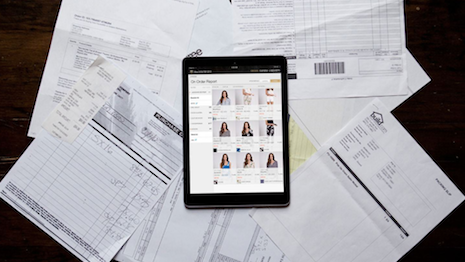 Retail has faced disruption. Image credit: Neiman Marcus
Retail has faced disruption. Image credit: Neiman Marcus
Despite the potential of leveraging consumer insights to guide merchandising decisions, many retailers are failing to effectively incorporate shopper data into their planning stages.
According to a new report from Boston Retailer Partners, 54 percent of retailers are looking to better integrate consumer data into their planning process, making it the top priority for the next year. As retailers look to deliver the assortments and seamless shopping experiences that consumers crave, being able to mine real-time data from a wider set of sources can help stores drive sales and loyalty in a competitive environment.
“Many retailers aren’t using customer data in their planning because is difficult from many perspectives,” said Gene Bornac, senior vice president and practice lead at BRP. “Gathering customer data from multiple sources and systems and integrating it into planning systems and process is a lot of work and many retailers don’t have the time, or think they don’t, to solve this challenge.
"The retailers that use customer data in their planning process enjoy the benefits of more accurate forecasts, assortments and allocations, which results in optimized inventory and sales," he said.
Boston Retail Partners’ 2018 Integrated Planning & Inventory Management Survey is based on an online survey of retailers.
Omnichannel opportunity
Many retailers that predate the rise of ecommerce are still struggling with siloed operations. Rather than looking at buying and merchandising as a cross-channel effort, teams are often split between bricks-and-mortar and online.
Less than half of retailers say they have integrated their organizational or merchandising planning across channels, and 39 percent say their planning systems are cross-channel. Most of the retailers who have undergone these efforts admit that they need improvement.
Forty-four percent of retailers say they plan inventory for individual channels. BRP notes that this structure does not allow for aligned organizational goals, and retailers might miss out on sharing customer insights across areas of the business.
Unifying the merchandising process could also help retailers save money on accruing inventory based on synergies.
This model also allows for flexibility, where a particular item can fulfill orders online or in-store.
 Retailers today need to be prepared to offer fulfillment across channels. Image credit: Nordstrom
Whereas most retailers used to keep their inventory separate to individual channels, BRP’s report notes that this has dropped to 48 percent today.
“Retailers continue to make progress in breaking down silos, but the progress is slow,” Mr. Bornac said. “Despite progress, there are still many retailers that plan channels individually and maintain separate assortments and inventories for different channels, as only 33 percent of retailers have these planning applications integrated.
"Brick-and-mortar teams still largely operate independently from ecommerce teams and vice versa," he said. "There remain opportunities for better integration across channels – and the people, processes and technology to support them – to enable the expected holistic customer experience.”
With the more complex challenge of managing inventory, promotions and assortment across channels, technology becomes all the more important for retailers. Most of the systems being used by retailers for planning are more than three years old, and a significant portion of those surveyed have plans to upgrade or replace them in the coming years.
Retailers are most keen to upgrade their omnichannel demand planning tools, while they are most content to keep their current store planning systems.
While many retailers are using their own in-house technology to handle processes, vendor applications are commonly used for demand planning and replenishment.
Retailers today need to be prepared to offer fulfillment across channels. Image credit: Nordstrom
Whereas most retailers used to keep their inventory separate to individual channels, BRP’s report notes that this has dropped to 48 percent today.
“Retailers continue to make progress in breaking down silos, but the progress is slow,” Mr. Bornac said. “Despite progress, there are still many retailers that plan channels individually and maintain separate assortments and inventories for different channels, as only 33 percent of retailers have these planning applications integrated.
"Brick-and-mortar teams still largely operate independently from ecommerce teams and vice versa," he said. "There remain opportunities for better integration across channels – and the people, processes and technology to support them – to enable the expected holistic customer experience.”
With the more complex challenge of managing inventory, promotions and assortment across channels, technology becomes all the more important for retailers. Most of the systems being used by retailers for planning are more than three years old, and a significant portion of those surveyed have plans to upgrade or replace them in the coming years.
Retailers are most keen to upgrade their omnichannel demand planning tools, while they are most content to keep their current store planning systems.
While many retailers are using their own in-house technology to handle processes, vendor applications are commonly used for demand planning and replenishment.
 Joor's mobile application solution for retail buyers. Image credit: Joor
Along with technology upgrades, another key area of opportunity in the planning process is customer data. While retailers tend to use information from transactions, customer relationship management systems and forecasting to plan, it is less common for them to mine social media data or customer segmentation insights.
There is also room for growth in incorporating real-time customer feedback into planning.
Collecting data is only one piece of the puzzle, and 39 percent of retailers are working to improve their analytics capabilities to better use the information they have.
Data driven
A number of retailers have sought fuller understandings of their consumers through data.
For instance, luxury consignment retailer The RealReal is transforming its commerce platform for a more comprehensible view of its audience.
Data is so abundant in today’s business that many retailers have trouble wading through it all to get an accurate view of their customers, but a new platform will allow The RealReal to harness insights more effectively. Already a pioneer in anticipating the needs of the modern customer, The RealReal is launching a new solution that will not only give a 360-view of each individual customer, but also allow for seamless inventory management more fitting for today’s retail environment (see story).
Japanese beauty group Shiseido similarly determined the importance of unified customer data after it was able to unearth the potential of data from its digital marketing platform.
The beauty manufacturer had inadvertently created a series of silos within its customer data that led to a disjointed view of the audience and left sales that could be obtained through personalized marketing on the table. Shiseido partnered with data platform Treasure Data to come up with a solution that built an ID for each individual customer and gained insights based on four criteria (see story).
Joor's mobile application solution for retail buyers. Image credit: Joor
Along with technology upgrades, another key area of opportunity in the planning process is customer data. While retailers tend to use information from transactions, customer relationship management systems and forecasting to plan, it is less common for them to mine social media data or customer segmentation insights.
There is also room for growth in incorporating real-time customer feedback into planning.
Collecting data is only one piece of the puzzle, and 39 percent of retailers are working to improve their analytics capabilities to better use the information they have.
Data driven
A number of retailers have sought fuller understandings of their consumers through data.
For instance, luxury consignment retailer The RealReal is transforming its commerce platform for a more comprehensible view of its audience.
Data is so abundant in today’s business that many retailers have trouble wading through it all to get an accurate view of their customers, but a new platform will allow The RealReal to harness insights more effectively. Already a pioneer in anticipating the needs of the modern customer, The RealReal is launching a new solution that will not only give a 360-view of each individual customer, but also allow for seamless inventory management more fitting for today’s retail environment (see story).
Japanese beauty group Shiseido similarly determined the importance of unified customer data after it was able to unearth the potential of data from its digital marketing platform.
The beauty manufacturer had inadvertently created a series of silos within its customer data that led to a disjointed view of the audience and left sales that could be obtained through personalized marketing on the table. Shiseido partnered with data platform Treasure Data to come up with a solution that built an ID for each individual customer and gained insights based on four criteria (see story).
“As retailers look for ways to compete more effectively, there tremendous amount of real-time customer data now available to retailers that allows them to customize the shopping experience and assortment in new ways,” Mr. Bornac said. “Knowing the customer better than the competition empowers retailers to coordinate personalized promotions and marketing to drive sales and increase customer loyalty.
"To deliver the experience customers expect, it is imperative for retailers to take a customer-centric viewpoint on the business and this requires an integrated planning approach," he said. "Current disparate systems, processes and organization must be transformed into one cohesive environment with the ability to offer customers a seamless shopping environment across all channels and the capability to deliver merchandise immediately – wherever it is needed.”
